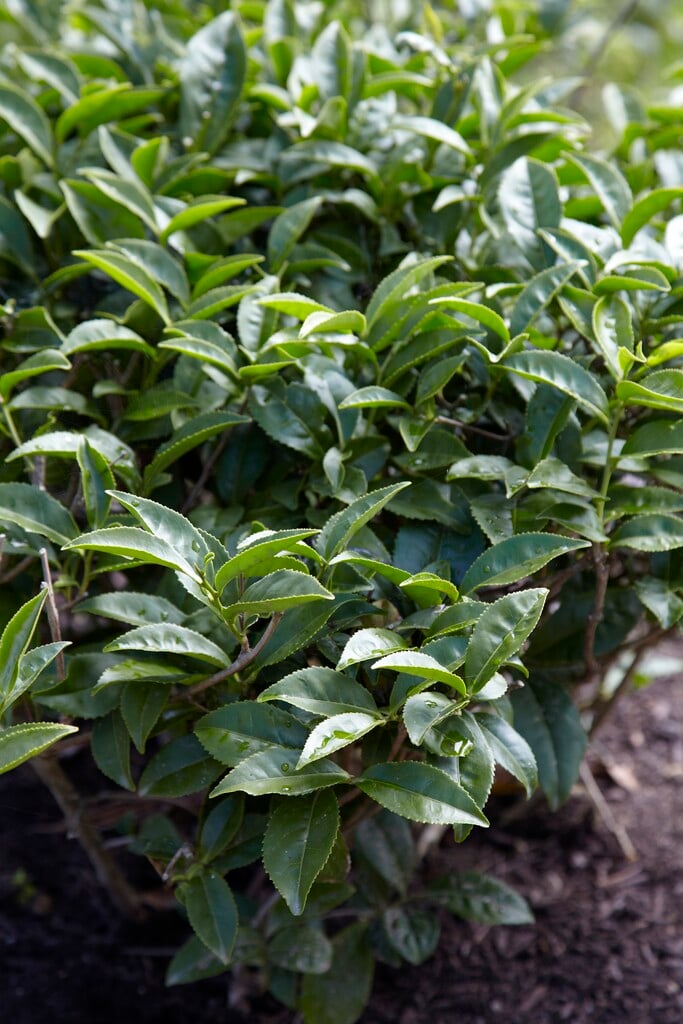Camellia sinensis
tea plant
A slow-growing, tender, large, upright evergreen shrub, with dark-green, lance-shaped, toothed leaves. It has fragrant, white, single flowers with many golden-yellow stamens in autumn and winter. If you drink tea, black, or green, this is the plant it comes from. Commercially grown plants are pruned to a height of 1.2m, to facilitate picking
Other common names
tea treeSize
Ultimate height
2.5–4 metresTime to ultimate height
10–20 yearsUltimate spread
1.5–2.5 metresGrowing conditions
Moisture
Moist but well–drainedpH
Acid, NeutralColour & scent
| Stem | Flower | Foliage | Fruit | |
| Spring | Green | |||
|---|---|---|---|---|
| Summer | Green | |||
| Autumn | White | Green | ||
| Winter | White | Green |
Position
- Partial shade
Aspect
North–facing or South–facing or West–facing
Exposure
Sheltered Hardiness
H4Botanical details
- Family
- Theaceae
- Native to GB / Ireland
- No
- Foliage
- Evergreen
- Habit
- Bushy, Columnar upright
- Genus
Camellia are evergreen shrubs with simple, ovate, glossy, leathery leaves and showy flowers with solitary or clustered flowers early in the year
- Name status
Correct
- Plant range
- China
How to grow
Cultivation
Choose a shady, sheltered site with acid soil that is fertile, moist, but well-drained. Plant shallowly, and mulch with bark or leaf mould. Buds and flowers should be protected from cold dry winds. Don't allow to dry out. Fertilise mid-spring and early summer. See camellia cultivation
Propagation
Propagate by seed, soak seed prior to sowing, sow when ripe under glass. Can also be propogated via hardwood and semi-hardwood cuttings
Suggested planting locations and garden types
- Architectural
- City and courtyard gardens
- Cottage and informal garden
- Low Maintenance
- Flower borders and beds
- Wall side borders
Pruning
Pruning group 8. Requires little pruning. Removal of damaged, dead, or diseased branches is best done after flowering
Pests
May be susceptible to aphids, scale insects and vine weevil
Diseases
May be susceptible to honey fungus (rarely), phytophthora root rot, camellia gall, camellia leaf blight, camellia yellow mottle virus and flowers and camellia petal blight
Love gardening
Sign up to receive regular gardening tips, inspiration, offers and more
View our Privacy Policy
Get involved
The Royal Horticultural Society is the UK’s leading gardening charity. We aim to enrich everyone’s life through plants, and make the UK a greener and more beautiful place.
